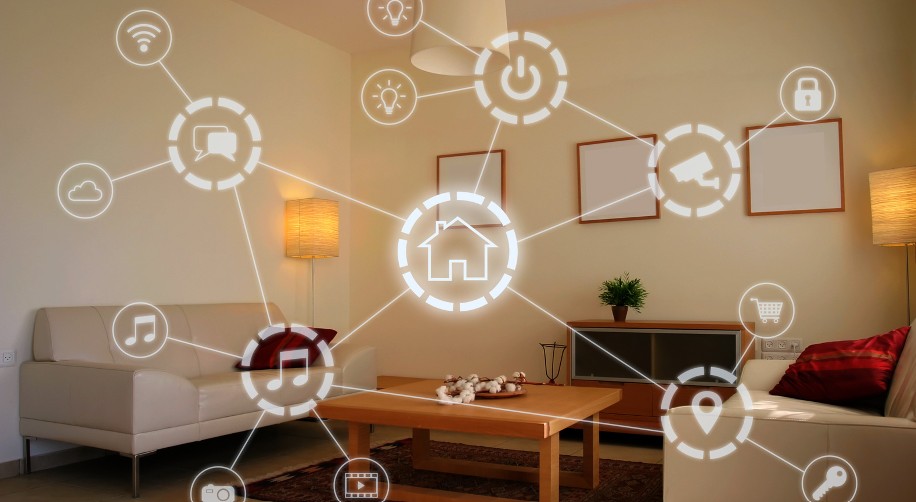What is the Internet of Things (IoT)?
The Internet of Things (IoT) is a modern technology that opens up new horizons for automation and convenience in everyday life. Thanks to IoT, objects around us become smart and connected to the Internet, allowing them to exchange data and perform tasks on their own or with the help of a user.
IoT technology has significantly changed the way we think about a modern smart home and has allowed us to create integrated systems for controlling household appliances and other elements of the home environment.
In modern smart homes, the integration of such technologies even allows you to use 50 no deposit free spins in special apps or games for entertainment that can be activated using smart devices.
The ability to integrate various devices into a single ecosystem opens up new ways for comfort, security, and energy saving. IoT technologies help create a dynamic environment that adapts to the needs and habits of users.
But what exactly makes IoT so special? How does its implementation in a smart home change our perception of comfort and security?
Benefits of Using Iot in a Smart Home

The Internet of Things affects many aspects of our lives, including comfort, security, energy efficiency, and even cost savings. The use of IoT in the domestic sphere can significantly increase the level of convenience for homeowners.
Smart devices, such as thermostats, smart lamps and voice assistants, can automate everyday tasks. For example, you can use a voice assistant to change the temperature in a room, switch on the lights, or even get the weather forecast.
These technologies provide an interactive connection between the user and the home, which adds comfort to everyone’s life.
The Internet of Things can significantly increase the level of security in the home. Smart security cameras, motion detectors, and remotely controlled door locks provide more effective control over home security.
Additionally, the ability to receive notifications on your smartphone when sensors are triggered makes the process of responding to possible threats much faster.
Integrating IoT into home systems also leads to significant energy savings. Smart thermostats that adapt to the owner’s habits can reduce heating and cooling costs by reducing energy consumption. Other devices, such as smart sockets, allow you to control the use of electrical appliances and avoid excessive electricity costs.
What Devices Can Be Integrated Into a Smart Home?
The use of IoT in the home environment involves the integration of a wide range of devices that can significantly improve everyday life.
Smart thermostats are a perfect example of how technology can change the way we manage indoor temperature. These devices learn to recognise the habits of their owners and automatically adjust the temperature settings depending on the time of day and whether the users are away from home.
Smart lamps and electrical appliances that can be connected to mobile apps can create the perfect lighting and save energy. For example, automatically switching off lamps in empty rooms or adjusting the brightness of lighting depending on the time of day can help reduce energy costs.
Smart security systems, including CCTV cameras, motion detectors, window and door sensors, provide high reliability and functionality. They provide not only video recording but also alerts in case of suspicious movements.
In addition, many modern systems integrate the possibility of receiving 20 free spins no deposit, which allows system owners to receive bonuses and additional benefits when using such technologies.
How to Choose IoT Devices for a Smart Home?

The choice of IoT devices for the home requires a careful approach, as not all devices meet high standards of quality and compatibility.
Before you buy smart devices, you need to figure out which functions are most important for your home. This could be a security system, energy saving, automation of household tasks, etc.
Make sure the devices you choose are compatible with other elements of your smart home ecosystem. Most manufacturers offer products that work with popular platforms such as Amazon Alexa, Google Assistant, or Apple HomeKit.
It’s always a good idea to pay attention to reviews and ratings from other users. This will help you understand which devices provide the best service and support.
IoT Challenges and Security
With the increasing use of IoT in household appliances, there is a need to ensure a high level of data security. All connected devices exchange information, and it is therefore important to prevent unauthorised access.
Whether it’s a security camera or a thermostat, it’s important to ensure that the data is properly protected. Using strong passwords and two-step verification will help provide an extra layer of security.
Regular software updates for all devices is a key aspect of protecting against potential threats. Manufacturers should update firmware in a timely manner to address possible vulnerabilities.
With the development of IoT-based technologies, smart homes are not only becoming more convenient, but also gaining popularity due to their cost-saving and security features.
Smart devices are transforming our habits and improving our quality of life. In the future, we can expect even greater integration of new technologies, making the smart home accessible and useful to everyone.
Tips for Implementing IoT in Your Home

- Find a balance between security and comfort.
- Conduct regular system reviews.
- Make sure your home Internet connection is reliable and secure.
The Internet of Things today is not only a trend, but also a tool that changes our lives for the better. Smart homes are already a reality that will make your life more comfortable and secure in the future.
Conclusion
The Internet of Things (IoT) is transforming the way we think about the modern smart home, offering many new opportunities for comfort, security and savings.
From automating household tasks to providing a high level of security, IoT devices are changing everyday life, making it more efficient and convenient. However, along with the benefits come challenges, including the need to protect personal data and maintain an adequate level of security.
The choice of smart devices for the home should be informed, taking into account compatibility, user feedback and the reputation of manufacturers. It is also important to regularly update software and monitor security systems to ensure protection against potential threats.
The future of IoT looks very promising. Technologies are constantly evolving, offering new features and capabilities. Smart homes are already becoming an integral part of modern life, and the introduction of IoT not only makes our lives more convenient, but also increases the level of comfort and safety. A smart home is not just a trend, but a necessary step forward towards a modern, economical and safe lifestyle.




